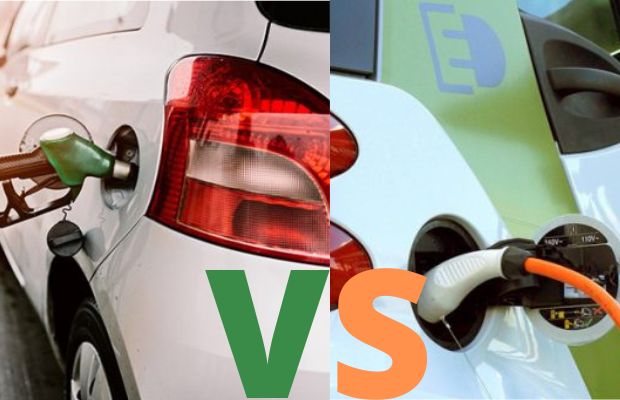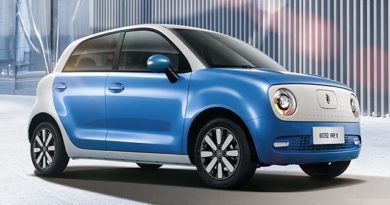Biofuels vs EVs: Best Alternative to Fossil Fuels
The global sales of biofuels are about $140 billion, led by North America With sales doubling in 2021 compared to a year earlier, EV seems to be the prime alternative to fossil fuels

In a bid to decarbonise the transportation sector, electric vehicle (EV) technology has emerged as a viable alternative to the non-renewable fossil fuels. But so have biofuels. Biofuels can be used as replacements for petroleum-based fuels like gasoline and diesel. As we search for fuels that won’t contribute to the greenhouse effect and climate change, biofuels are a promising option because the carbon dioxide (CO2) they emit is recycled through the atmosphere. Although the burning of biodiesel produces carbon dioxide emissions similar to those from ordinary fossil fuels, the plant feedstock used in the production absorbs carbon dioxide from the atmosphere when it grows. In addition, engines that run on biodiesel can be more efficient than gasoline-powered engines.
Similarly, electrifying the mobility will also stand as an alternative to fossil fuels driven ICE vehicles, but only if the batteries are charged with renewable energy. Of course, for electric mobility to have a net positive contribution to emissions reduction, a long-term change in energy supply infrastructure is prerequisite. As most of today’s electric cars are powered by coal-produced electricity, it defeats the purpose of attempting to decarbonise.
Nevertheless, Biofuels and EVs, each has shown promise to be a viable alternative to fossil fuels, replacing pollution causing energy source sooner or later. Interestingly, which one will dominate the market remains a topic of speculation. Biofuels can be used to power vehicles that run on internal combustion engines (ICE), while, to make use of EV, their percentage share in transportation needs to be increased. Thus, Biofuels can address the world’s present challenges, while EVs may run the future. In more optimistic scenario, it is possible that we may have a future where ICE vehicles and EVs coexist.
Biofuels Market
Most of the cars on the roads are with internal combustion engines. Thus, it is only logical to expect that a high percentage of cars with internal combustion engines will still be on roads for decades. Undoubtedly, decarbonisation of road transport would benefit significantly from the use of low-carbon fuels such as renewable ethanol.
As per one IEA forecast, Global demand for biofuels is set to grow by 41 billion litres, or 28%, over 2021-2026. One-fifth of this demand includes recovery to pre-Covid-19 demand levels. Factors like government policies, overall transport fuel demand, and costs will influence which fuel will see quickest growth. By virtue of these factors, in the next few years, Asian biofuel production will move past Europe.
Policies in the US and Europe will help demand for renewable diesel (also known as hydrogenated vegetable oil [HVO] in Europe) to nearly triple. Apparently, in 2021, biodiesel, renewable diesel and biojet, expanded well beyond 2019 levels – 15 per cent, or 7 billion litres, up from 2019 levels. Renewable diesel demand in the US and Asian biodiesel demand are responsible for the majority of this growth.
Challenges to Biofuel
High prices of feedstock have marred the biofuel production in several countries. For example, some governments have responded to the current high price of feedstock by relaxing or delaying biofuel blending mandates, with the effect of reducing demand. However, over the medium term, major policy discussions in the United States, Europe, India and People’s Republic of China (hereafter ‘China’) hold the promise of a more than doubling of biofuel demand growth in the accelerated case. Brazil, Argentina, Colombia and Indonesia are managing climbing feedstock and biofuel costs by temporarily reducing or delaying blending mandates.
There are some more factors hindering the progress of biofuels to become a viable alternative to fossil fuels as well. Increasing energy efficiency, surging electric vehicle sales and behaviour change all contribute to lower demand. Lower gasoline demand reduces ethanol volumes under current policies. However, ethanol demand recovery in Brazil and growing demand in Asia will eventually offset declines in the United States and Europe in 2023.
Major Players in the Biofuel Industry
Currently, the global sales of biofuels are about $140 billion. The global market size may surpass around US$ 201.21 billion by 2030. Valued at US$ 120.60 billion in 2020, it is expected to grow at a CAGR of 8.3% from 2021 to 2030. North America accounts for nearly 35% of Global Market.
Major biofuel manufacturers include Green Plains, Poet, and Renewable Energy Group (all based in the US), along with Abengoa (Spain), Cosan (Brazil), and Novozymes (Denmark); as well as units of oil and gas producers such as Chevron and Valero, and crop processors such as Archer Daniels Midland and Bunge. China Clean Energy Inc. and Wilmar International (Singapore) are some of the Asian majors in the segment.
Electric Vehicle Market
The year 2021 was the harbinger for electric vehicles when the vehicle industry became confident that the EV is the prime alternative to fossil fuels driven vehicles. The market hit an all-time high in sales for any year. Nearly 3.4 million electric vehicles (tripled from a year earlier) were sold in 2021 in China alone, more than the entire global sales of 2020. This must be enough to gauge that the trend of EVs is much stronger than the struggling biodiesel alternative.
The annual electric car sales in Europe increased by 70% in 2021 to 2.3 million. This was impressive as the pandemic hit the overall European automotive adversely. The growth may also be attributed partially to the new CO2 emissions standards on the continent. Germany (25%), the United Kingdom and France (both around 15%), Italy (8.8%) and Spain (6.5%) were the countries with the largest market shares on the continent. Some nations are a step ahead. In Norway, the EV share of new sales is over 80% now, even as ICE vehicles will no longer be available for a buy by 2025.
In United States, crossing 500,000, sales more than doubled in 2021, a share of 4.5 per cent of the total. Although more than half the electric car market is still dominated by Tesla, its total share in the market declined which indicates the start-ups and growing interests of auto majors in the segment.
China, Europe, and the United States account for roughly two-thirds of the overall car market, while they constitute a staggering 90 per cent of global electric car sales. Contrastingly, in large developing economies such as Brazil, India, and Indonesia, the share is still below 1 per cent.
Challenges to EV
Various challenges, mostly from supply side, hinder the growth of the industry. The bulk material prices, (steel, aluminum, copper, etc.) are increasing for the entire auto industry. In addition, electric cars faced price rise in battery production due to the well reported issues around Lithium ion batteries.
Global microchip shortages have affected the EV markets worldwide as they require around twice as many chips as conventional vehicles. As the demand is increasing for EV much faster than the present supply, it is challenging to keep up the pace of EV growth. Other major issues include lack of infrastructure, limited driving range, safety associated as the batteries catch fire and lead to mishaps.
As the industrial innovators are keen on addressing the issues, some new technological advances are already showing promising results. Many EV models have shown manifolds increase in range to as high as 300 miles. Further global EV battery manufacturers are also pushing production and, in some cases, innovations.
Major Players in the EV Industry
The key players operating in this market are BMW Group (Germany), BYD Company Ltd. (China), Daimler AG (Germany), Honda Motor Co., Ltd. (Japan), Hyundai Motor Company (South Korea), Kia Corporation (South Korea)Nissan Motor Co., Ltd. (Japan), TATA Motors Limited (India), Mahindra & Mahindra Ltd. (India), Tesla, Inc. (U.S.), Volkswagen AG (Germany), Toyota Motor Company (Japan), Mitsubishi Motors Corporation (Japan), Groupe Renault (France), Beijing Automotive Industry Corp. (BAIC) (China), SAIC Motor Corporation Limited (China), Geely Automobile Holdings Limited (China), Guangzhou Xiaopeng Motors Technology Company Ltd. (China), and NIO Inc. (China).
Pros and Cons: EVs and Biofuels
Both the mobility options, biofuel-run vehicles and EVs, have their own shares of merits and demerits. While it is still murky to declare any one a prominent alternative to fossil fuels over the other, both have their own sets of pros and cons. Some of their major merits and major bottlenecks of each of them are listed below.
BioFuels
Pros and cons of biofuels are as follows.
Pros
- Renewable Energy Resource
- Green energy -comes from natural sources
- Helps keep the environment clean- low level of greenhouse gas emissions; reduce up to 86% of greenhouse gas emissions than fossil fuel
- Improved utilization of land and waste
- Reduction in landfill sites
- As efficient as gasoline
- A large number of sources are available for the production of biofuels
- Employment generation due to increased local production
- Comparatively safe technology that is easier to implement as well
- Easily blends with existing fuels
- Lower pollution compared to burning fossil fuels
Cons
- Needs a Lot of Water
- Reduces Agricultural Land for Food Crops
- No crop rotation – when farmers cultivate the land for biomass, only a limited number of crops are grown there
- Can cause prices of staple crops to increase due to decreased availability of land
- Huge start up investment required and high production cost
- Not preferred by many as it can erode some metals, rubber, and plastic parts
- Deforestation. Might lead to clearing lands to make way for biomass crops.
- Not Suitable in All Weather
EVs
Pros and Cons of EVs are as follows.
Pros
- Renewable Energy Resource
- Green energy -comes from natural sources
- Reduced carbon footprint. Electric cars emit zero tons of CO2 or other greenhouse gases
- Low maintenance needs as do not have a lot of moving parts that need replacements or maintenance
- High-quality performances as electric cars operate smoothly and quietly
- Ability to charge electric models at home makes them more convenient options
- Electricity is cheaper than Gasoline
- Tax credits
Cons
- Charging station availability is inconsistent
- Charging takes a while, unlike gas powered vehicles which take just around a couple of minutes
- Limited Driving range
- High initial costs
- Battery packs can be expensive to replace
- There are very fewer choices




